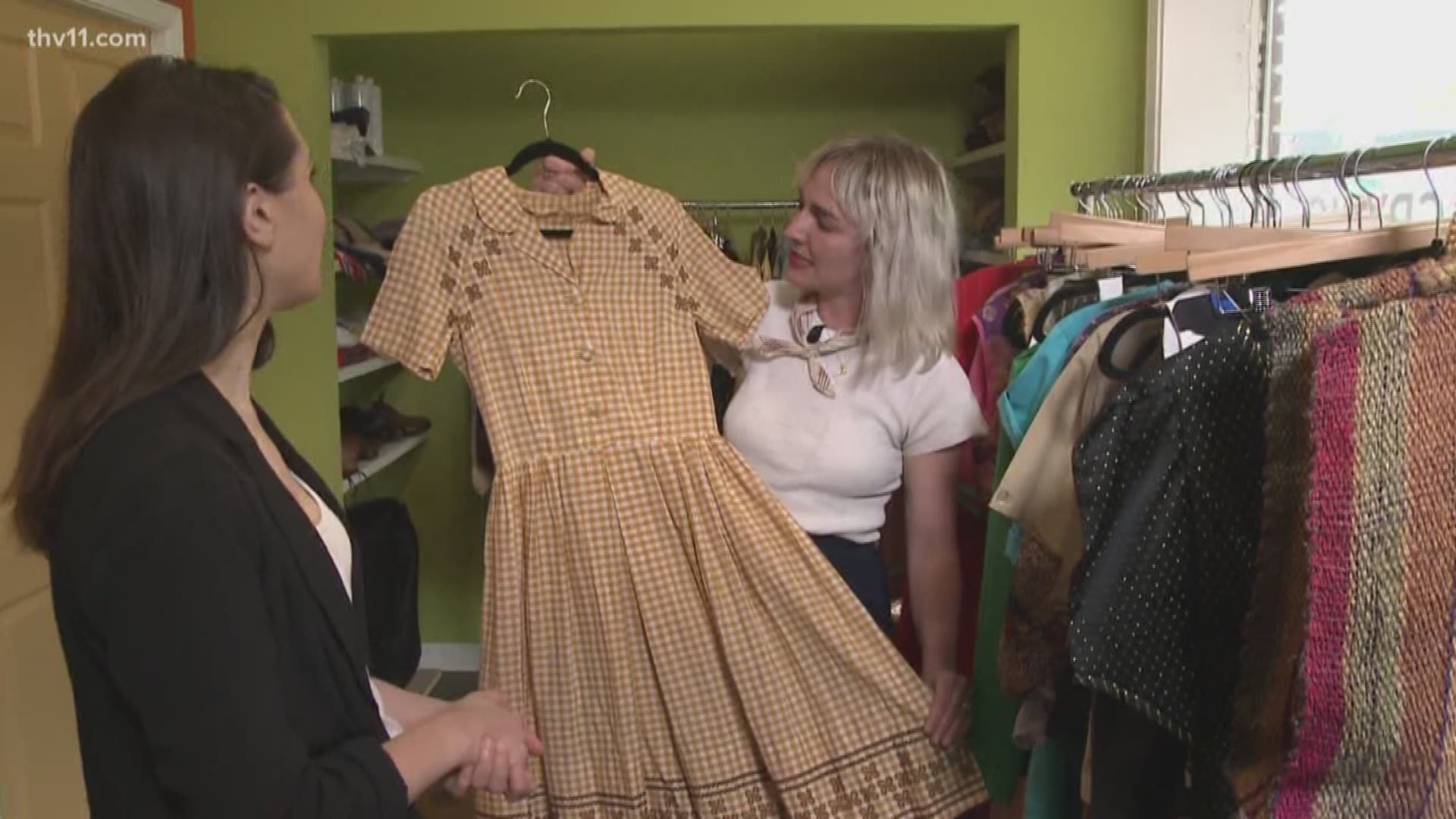LITTLE ROCK, Ark — You might think of cars or airplanes when it comes to pollution, but the clothing industry is also a big part of the problem.
Thrifted clothing is a passion for Alex Flanders. So much so, she quit her full-time job two years ago and started her own thrift store Crying Weasel Vintage.
"There's only one of these [dresses], so if you really want to be one of kind, you should shop vintage for sure,” Flanders said.
Flanders said not only can you find unique pieces, but vintage shopping is also good for the environment.
“I think that people are starting to know more about it because sustainability is kind of a trendy topic right now and thank god it is because how else are people going to get turned on to it?” she said.
That's because shopping vintage helps keep clothing out of landfills. A study by the Environmental Protection Agency shows ten and a half million tons of clothing ended up in landfills in 2015 in the United States.
“And if that grosses you out, good, it should,” Flanders said. "I think that shopping more with intention and just knowing where your clothes come from, helps."
Toni Boyer Stewart is a professor and on the suitability committee at UA-Little Rock. She said the average person throws out 68 garments of clothing per year.
"The problem is over-consumption. We are buying too much,” Stewart said.
Stewart said most clothing is not biodegradable. According to CBS News, in 2016, the apparel and footwear industries accounted for more than 8 percent of global climate impacts -- that's more than all international flights combined...aviation accounted for just two percent of the world's carbon emissions.
"I think people are beginning to know that it's a problem. Especially with the Marie Kondo craze. She goes into these homes where there's just so much stuff and you realize that you're over-consuming, and people think 'I don't want this stuff,” Stewart said.
So, what can you do to stop this cycle?
"Well certainly you can donate. Donate your stuff as much as you can to any charity or goodwill or anything like that, so it can be reused,” Stewart said.
Flanders said to also think quality over quantity.
"You can reduce the amount that you waste by not buying a bunch of cheap clothing and then wearing them once,” she said.
She said to look for brands that are sustainable. Rental companies like “Rent The Runway” also helps keep consumption down because you can return pieces once you are done with them for someone else to wear.
“There are companies out there who make clothing responsibly out of sturdy materials and it may cost more but you're investing, and you can just wear it over and over,” Flanders said.
But if you cannot afford to invest in more expensive pieces, Flanders said thrifting is a good start.
"I try to have comparable prices to Forever 21 and H&M,” Flanders said. "Have a little fun with your style and I think if you can feel good about what you're buying you can feel good about what you're wearing, and it just helps your overall attitude."
Stewart recommends also trying to sell your clothing at resale shops like Buffalo Exchange or Plato's Closet before tossing it.

